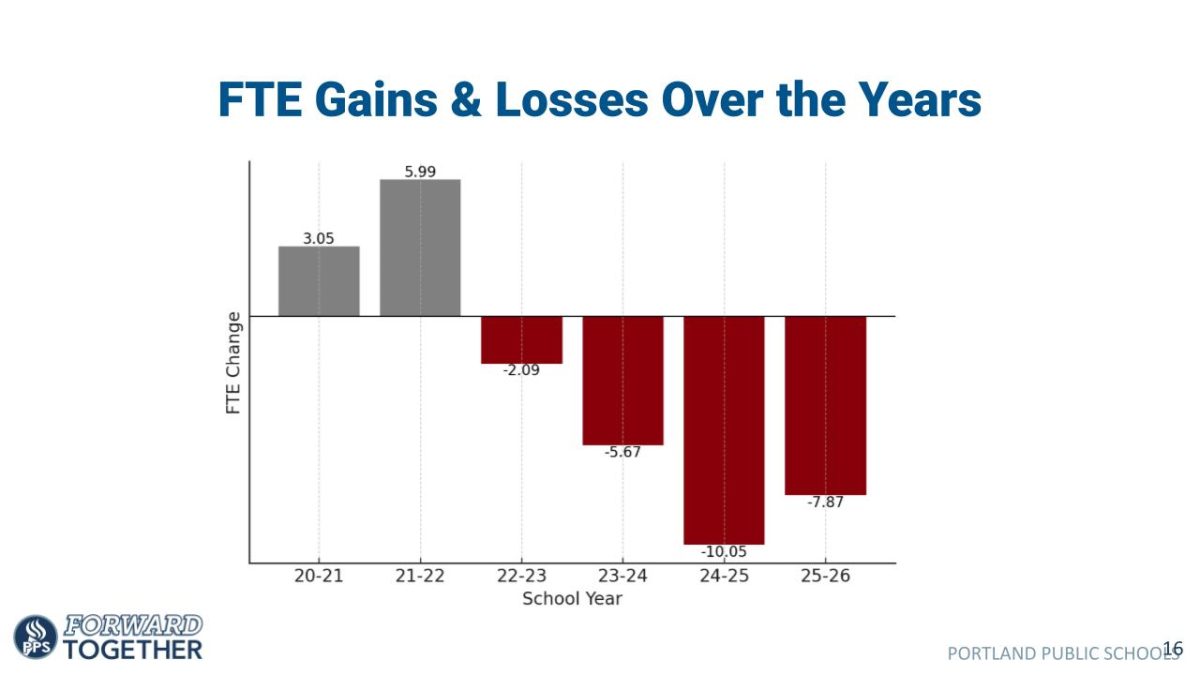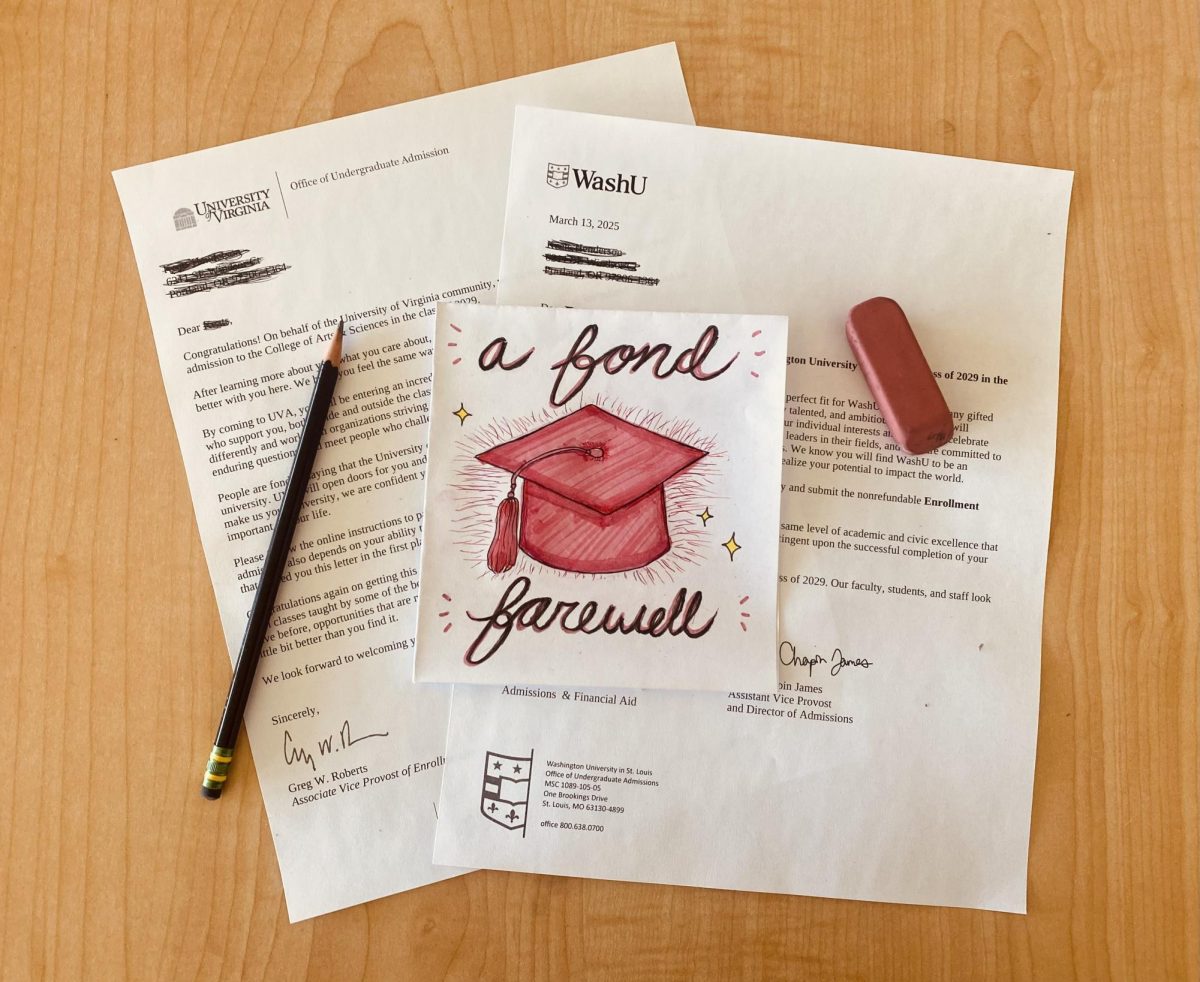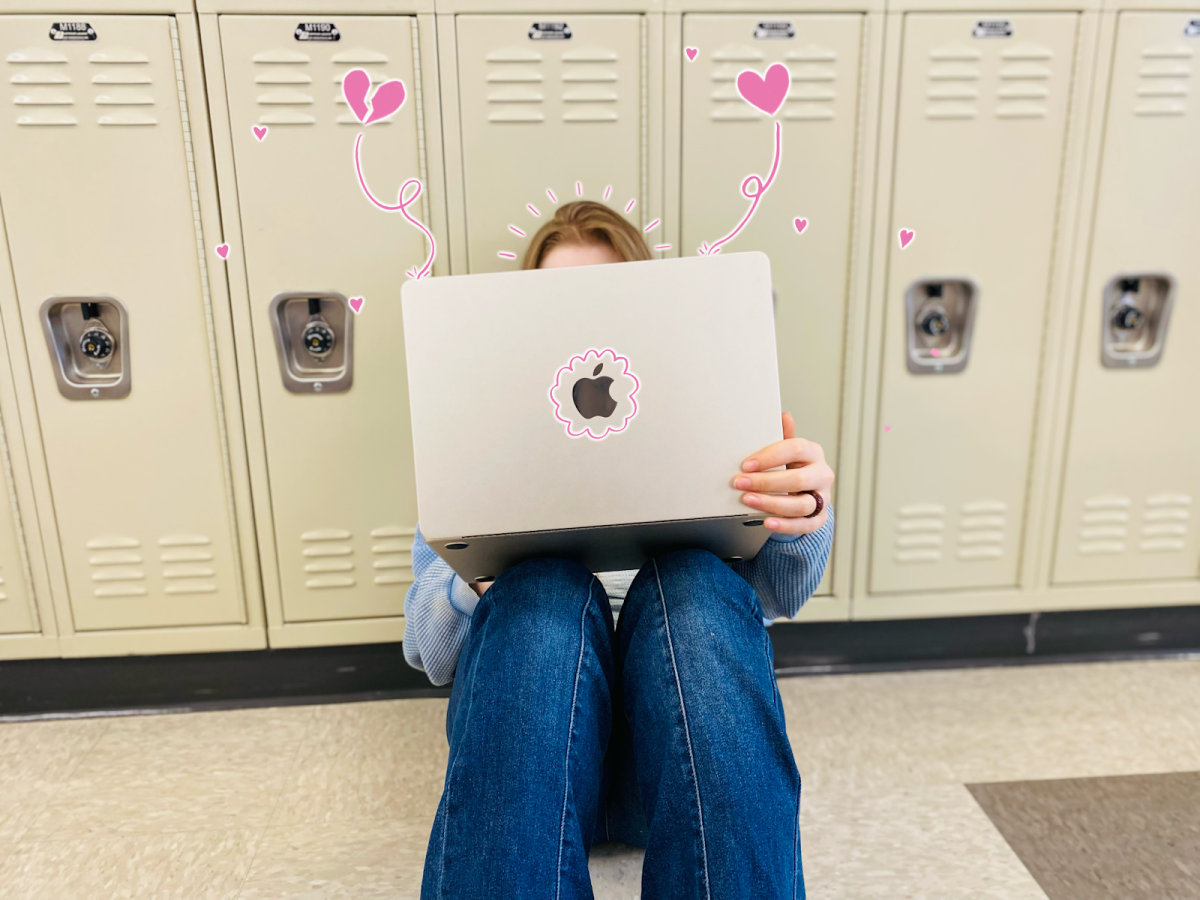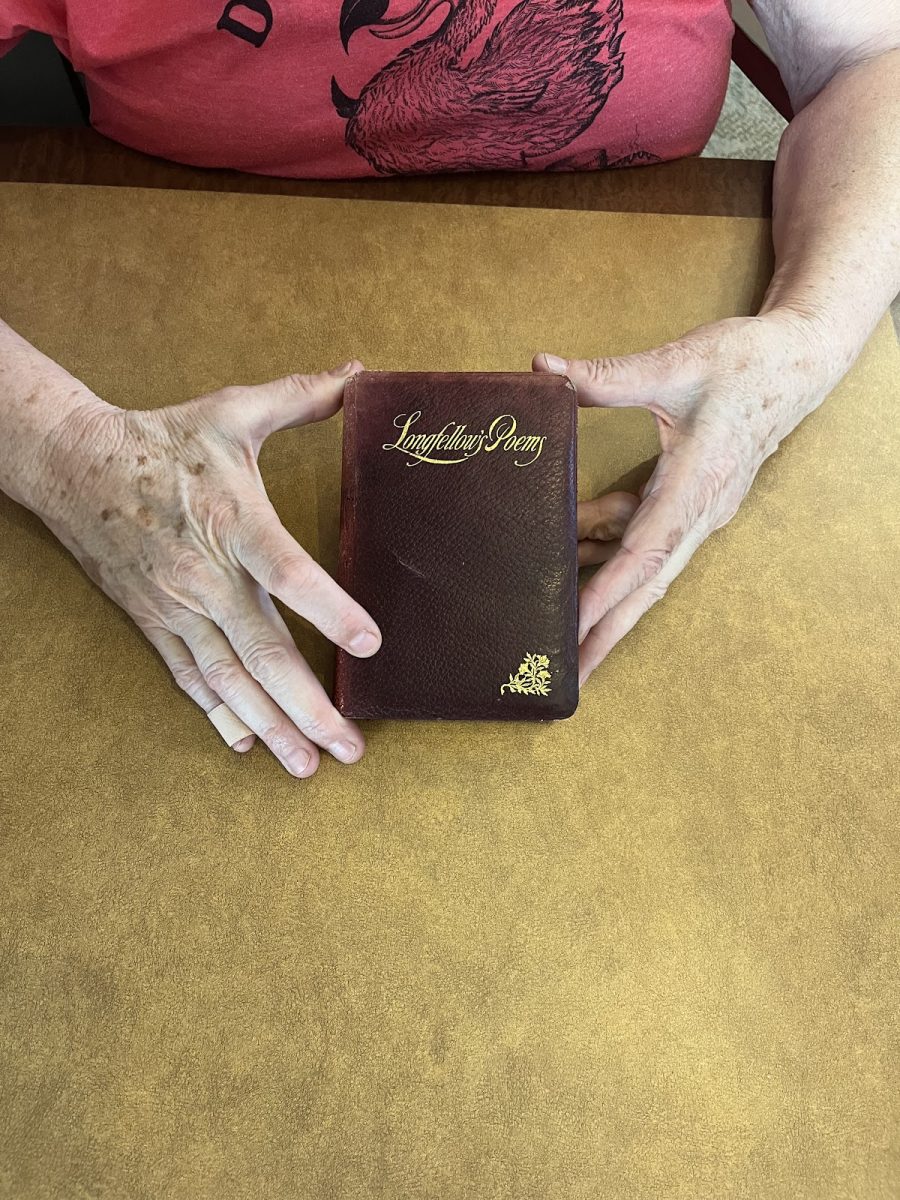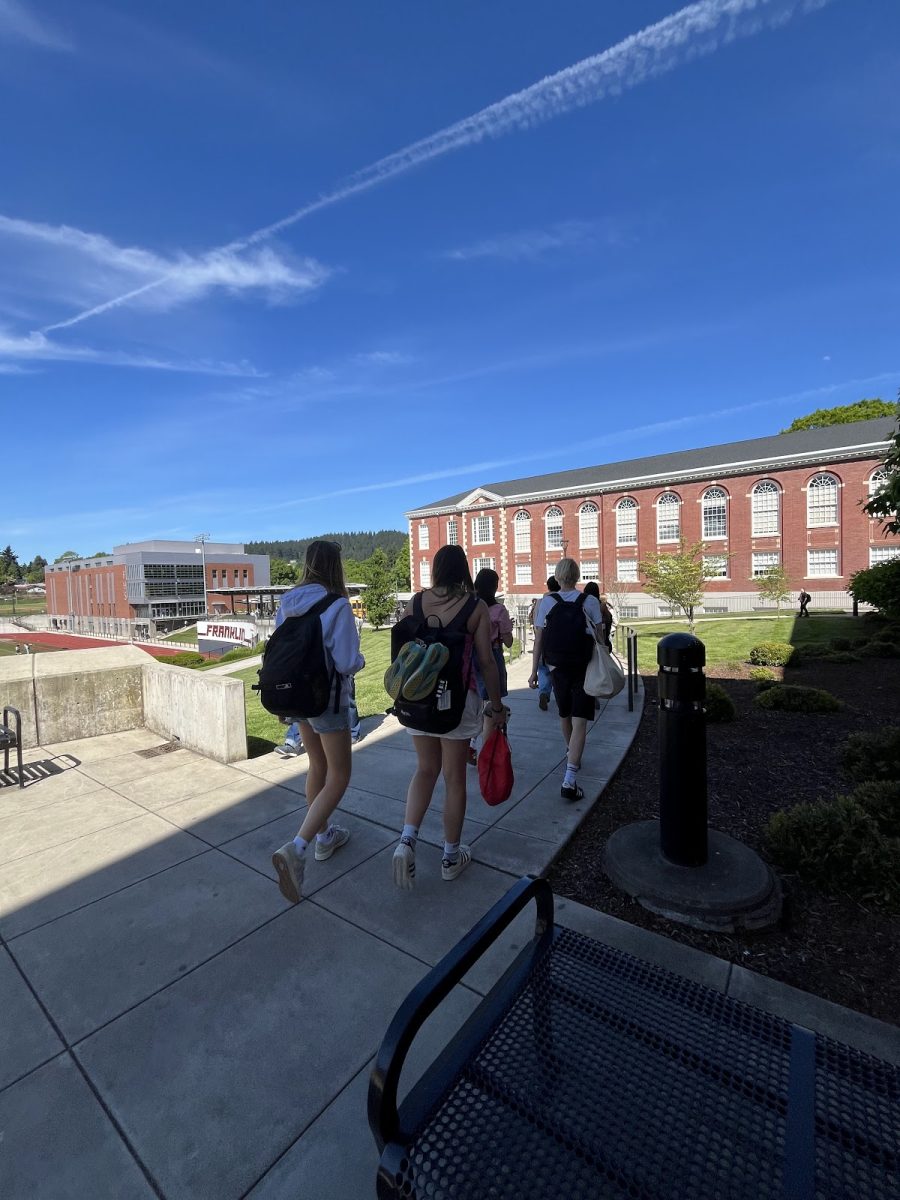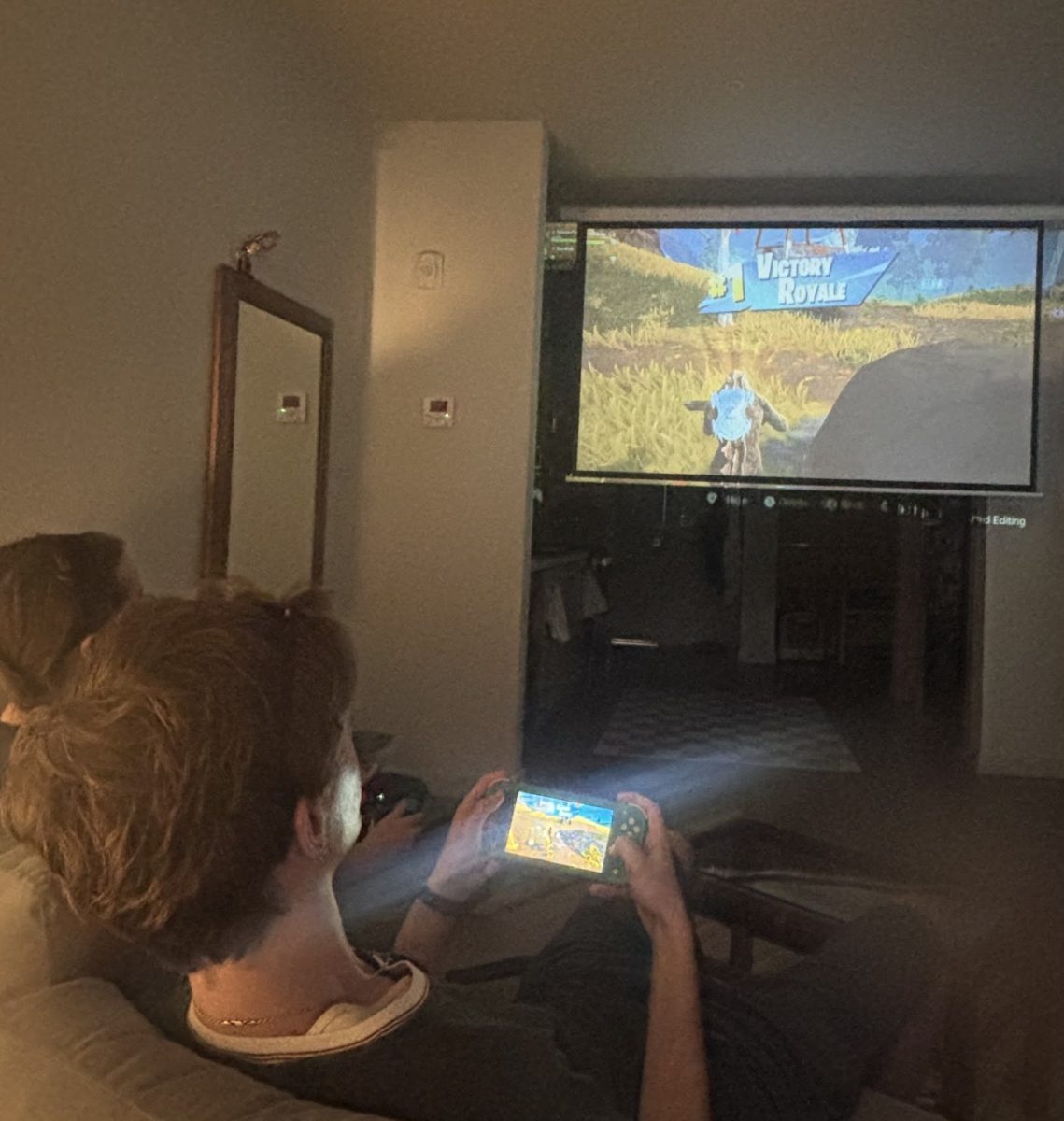
Photo Caption: Student on their phone during class time. Under the current policy, phones can only be used during class time with direct permission from a teacher and for educational purposes only.
Most students are familiar with this scene: the classroom is quiet; only the creak of shifting chairs and the click of mechanical pencils can be heard. Out of the blue, the ding of a notification slices through the concentrated silence. Flustered, the owner of the phone rushes to turn the ringer off before relinquishing the device to the outstretched hand of a teacher.
Schools everywhere are still searching for an answer to the cell phone problem. Last year, Franklin announced a newer, more strict cell phone policy: phones are to be off and away during the school day unless used for education purposes under the direction of a teacher. The policy also included new rules governing cell phone policy infractions. These new rules implemented a ‘three strikes and you’re out’ policy, with each rule infringement leading to greater consequences. This year, the policy has remained mostly the same with the exception that phones are now allowed during passing periods and during lunch.
This new phone protocol was instituted after former Franklin Vice Principal Dennis Joule put together a steering committee group, who agreed that a more consistent, school-wide policy was needed. “Mr. Joule really led that change,” says current Franklin Vice Principal Emily Mather. “Before that, teachers were responsible for the cell phone policy in their own classroom.” Having such an inconsistent policy created conflict between students and teachers. “[Teachers] often got feedback from students saying they were being draconian for having a strict policy… now teachers don’t have to be put in the situation where they feel like the bad Despite the policy’s focus on consistency, there are still discrepancies in how teachers guy,” Mather says.
Administration has received a great deal of positive feedback on the policy from teachers who agree that it has done a great job of keeping students focused on learning and teachers focused on teaching. “The policy has definitely been strongest over the past two years,” says English teacher Dana Vinger. “Before, none of the policies really worked.” For all the positive feedback teachers have given, Vinger acknowledges that the policy is not perfect, having heard stories of teachers who have had a phone break after taking it from a student and then had to pay for the damages. Students can also be reluctant to give up their phones, leading to more teacher-student confrontations.
Despite the policy’s focus on consistency, there are still discrepancies in how teachers deal with phones. “I wish [the policy] was enforced consistently,” says Franklin student Kate Patterson (10). “I think cell phone policies that aren’t very consistent are unfair to students, and definitely create tension between students and staff.” That tension was echoed in many students’ responses to the new guidelines governing phone use. Many believe that the new policy is just too harsh, asserting that a phone shouldn’t be taken away simply for being visible.
However, some teachers are of the opinion that having the phones out on the desk would just be too tempting for students. Teachers like Ms. Vinger believe that an off and away policy is important for cultivating a healthier relationship with cell phones, believing that their prevalence in our culture has changed the way students interact with each other both in class and outside of it. Much of the students’ daily social interactions come from social media rather than through face-to-face interactions. “Students don’t talk so much to each other. They’re talking through their phones,” says Vinger. In her experience, she’s found that many students feel a strong attachment to their phones and won’t give them up without a fight. “For some, it’s straight up addiction,” she says.
The increase in social interaction and relationships developing over technology and social media rather than in person has played a huge role in students’ reluctance to accept the new policy. “You can’t expect students to focus on one task for an hour and a half, four times a day without doing anything else,” says Christian Waite (10). “I feel [the policy] creates more distance between staff and students.”
Mather agrees that tension between teachers and students around phone use has increased with the institution of the new policy. The increase in tension is evidenced by the hundreds of cell-phone related referrals entered into Synergy each semester. Phones are currently the number one cause of referrals. “That’s not necessarily a bad thing,” Mather says. In other words, having that distance between teachers and students has given staff greater authority. The referrals entered into Synergy are mainly first level. “Once a student has to retrieve their phone from the office they tend to learn their lesson,” Mather explains.
It’s unclear how the cell phone policy will change in the future. Currently, Portland Public Schools does not have a district-wide policy governing phone use in schools, leaving the policy decisions up to individual schools. These schools have taken unique positions in managing phone use. Schools like North Clackamas High School have banned phones at the door, while other schools are choosing to have individual teachers develop a policy for their classroom. Although the future of the cell phone policy is unknown, it doesn’t look like conflicts over it are going to go away any time soon.



